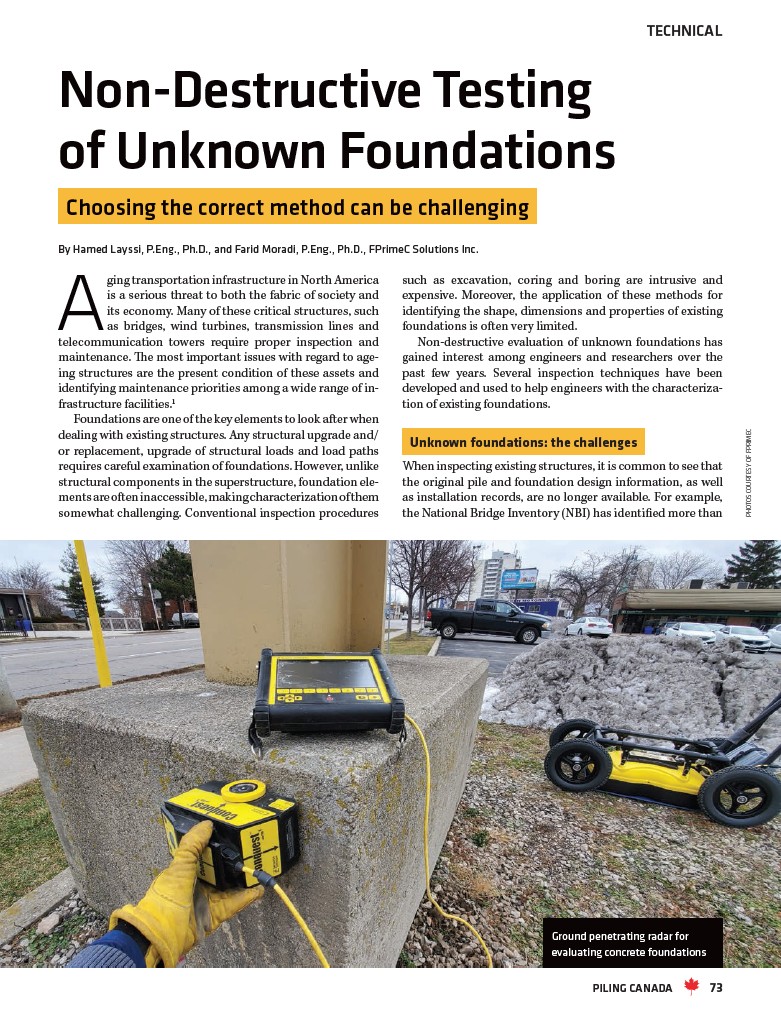
Non-Destructive Testing
of Unknown Foundations
Choosing the correct method can be challenging
By Hamed Layssi, P.Eng., Ph.D., and Farid Moradi, P.Eng., Ph.D., FPrimeC Solutions Inc.
Aging transportation infrastructure in North America
is a serious threat to both the fabric of society and
its economy. Many of these critical structures, such
as bridges, wind turbines, transmission lines and
telecommunication towers require proper inspection and
maintenance. The most important issues with regard to ageing
structures are the present condition of these assets and
identifying maintenance priorities among a wide range of infrastructure
facilities.1
Foundations are one of the key elements to look after when
dealing with existing structures. Any structural upgrade and/
or replacement, upgrade of structural loads and load paths
requires careful examination of foundations. However, unlike
structural components in the superstructure, foundation elements
are often inaccessible, making characterization of them
somewhat challenging. Conventional inspection procedures
TECHNICAL
such as excavation, coring and boring are intrusive and
expensive. Moreover, the application of these methods for
identifying the shape, dimensions and properties of existing
foundations is often very limited.
Non-destructive evaluation of unknown foundations has
gained interest among engineers and researchers over the
past few years. Several inspection techniques have been
developed and used to help engineers with the characterization
of existing foundations.
Unknown foundations: the challenges
When inspecting existing structures, it is common to see that
the original pile and foundation design information, as well
as installation records, are no longer available. For example,
the National Bridge Inventory (NBI) has identified more than
PHOTOS COURTESY OF FPRIMEC
Ground penetrating radar for
evaluating concrete foundations
PILING CANADA 73